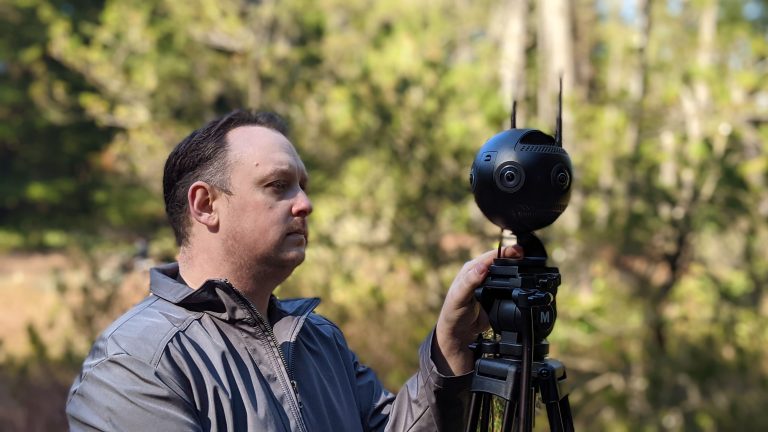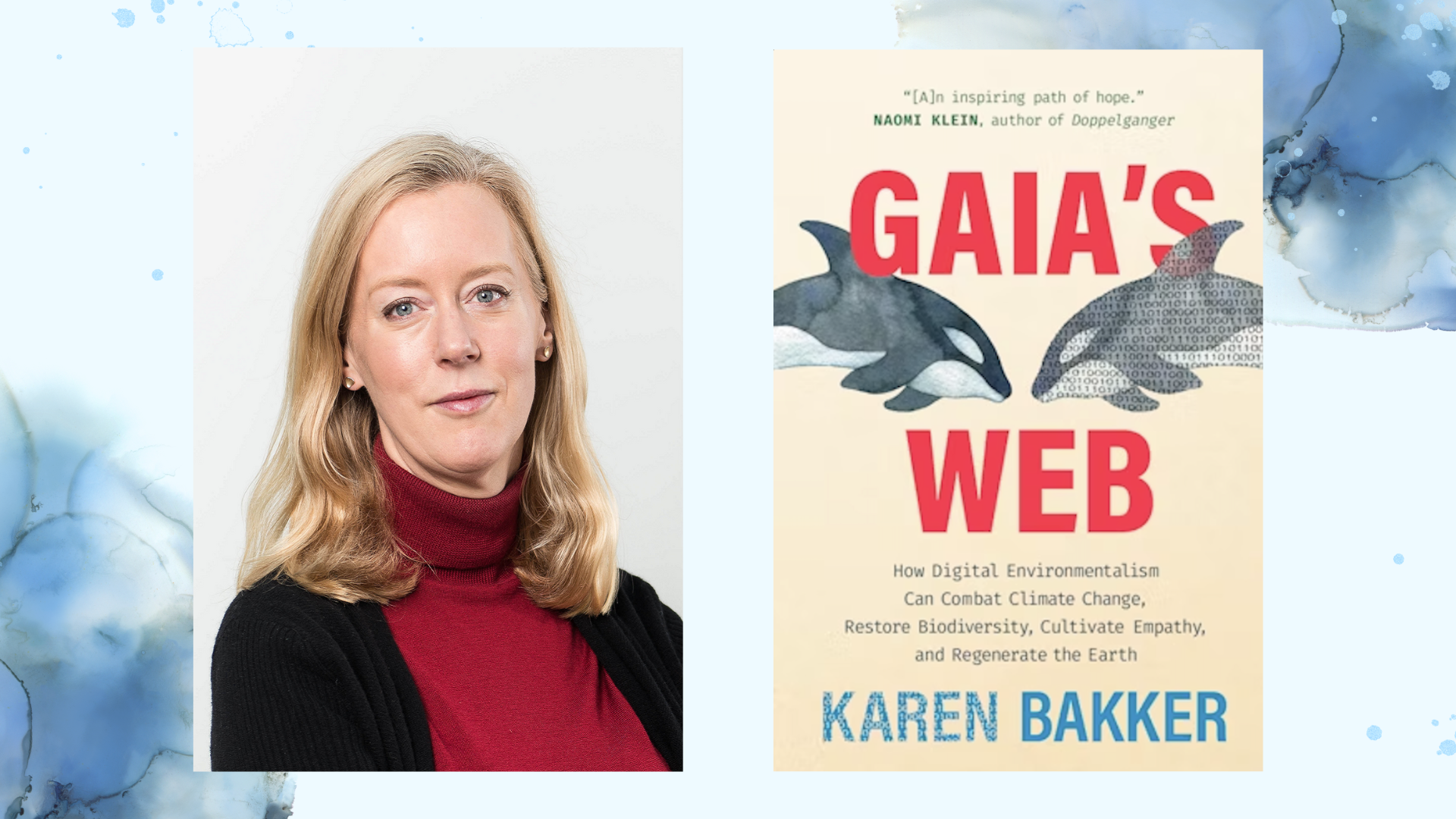

PhD candidate Micheal Jerowsky collected footage for the field trip using a 360° camera
When it comes to field trips, we tend to believe that nature is best experienced in person. Although virtual reality was widely deployed as a field trip tool in 2020, when travel was limited, it still remains far from the first choice for many teachers.
Yet research is showing that virtual reality (VR) and augmented reality (AR) have very important — and effective — ongoing roles in experiential education; and this potential is being further explored by a current graduate student project at UBC Geography.
PhD candidate Micheal Jerowsky has built a virtual field trip of Camosun Bog, in Vancouver’s Pacific Spirit Regional Park.
The once large bog was and is a source of stories, food, medicines, raw materials and trade commodities for the Musqueam. It is also home to many plants and animals that have adapted to its wet, low-nutrient, and acidic environment.
Local housing developments and climate change have threatened the bog’s health, and today it is at risk of disappearing. Camosun Bog Restoration Group, Pacific Spirit Park Society, Musqueam First Nation and Metro Vancouver Regional Parks have been working to protect and restore the area for decades, and the field trip allows people to explore both the reasoning behind, and impact of, this work.
Utilising 360° footage and photography to immerse viewers in the environment, combined with interactive hotspots that contain insights from scientists, local community members, and Musqueam knowledge holders, the field trip creates an arguably more information-rich experience than simply visiting the bog in person.


Viewers can see and hear the bog in different seasons, and access video and cultural materials that are not currently on display at the bog itself
It is now being offered to fourth, fifth and sixth grade students in the Vancouver School District.
“Connecting students meaningfully to green space is a big part of my research,” says Jerowsky. “For me, personally, the most important thing is that these local school groups and park societies that I’m working with are going to be able to use this, and that the children that I see every day are going to learn something really important about a space that they’ve been helping to preserve and protect,” he says.
He will assess the virtual field trip’s impact on the students’ connectivity to nature, ecological literacy and pro-environmental behaviours, and hopes the resulting information will contribute to creating guidelines and best practices for educational technologists and researchers using VR and AR.
As for the longer term future of these technologies; Jerowsky doesn’t see them replacing the in-person experience of a field trip across the board. But he feels they have a very important ongoing role to play – especially for those who cannot easily get out in nature as part of their ongoing education.
“Not everybody lives in Vancouver, and can visit Camosun Bog. Also, there are people who might not be able to physically access a place like this. Those sorts of accessibility issues can be partially solved through virtual reality,” he explains.
Learning materials for the Camosun Bog 360° Field trip were co-created with the Camosun Bog Restoration Group and Pacific Spirit Park Society.
Community content also features links to publicly available media and learning materials developed by the Musqueam First Nation and UBC Museum of Anthropology, Metro Vancouver, the David Suzuki Foundation, and SAKIArt.


